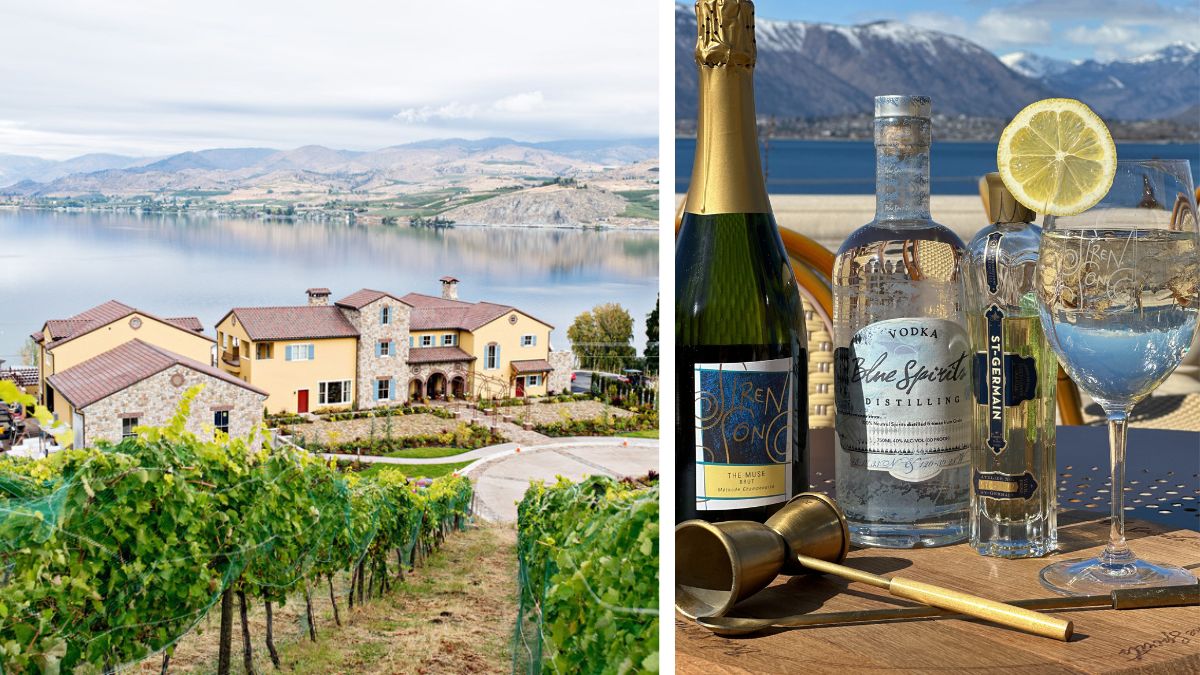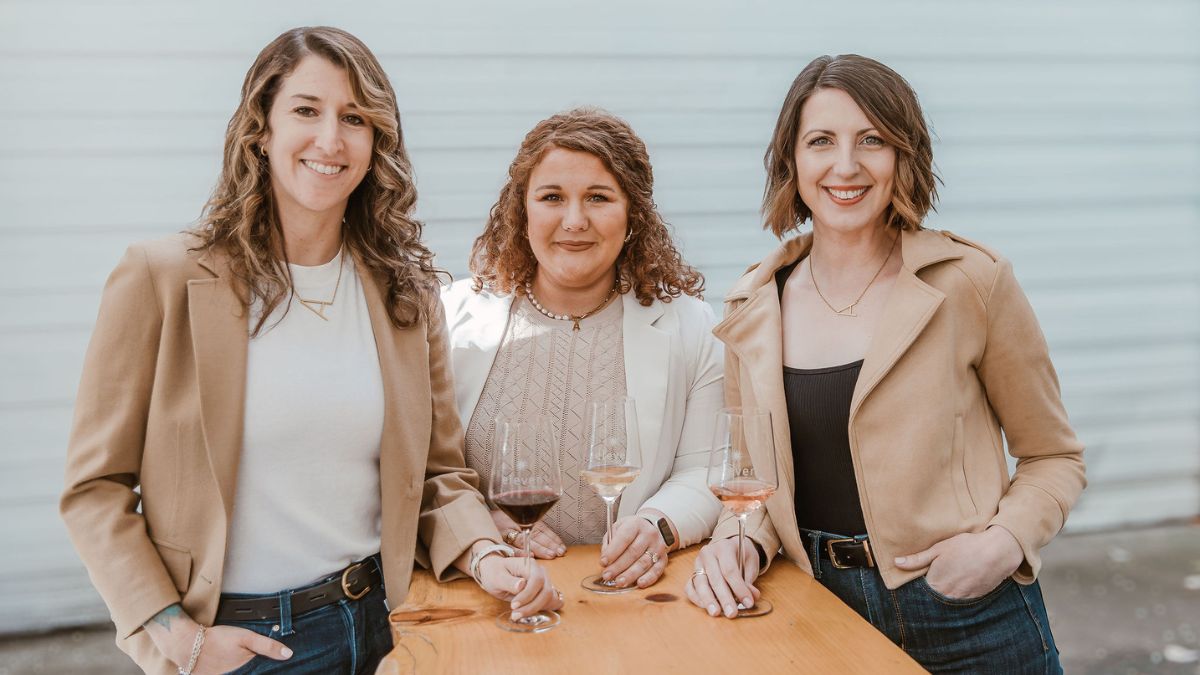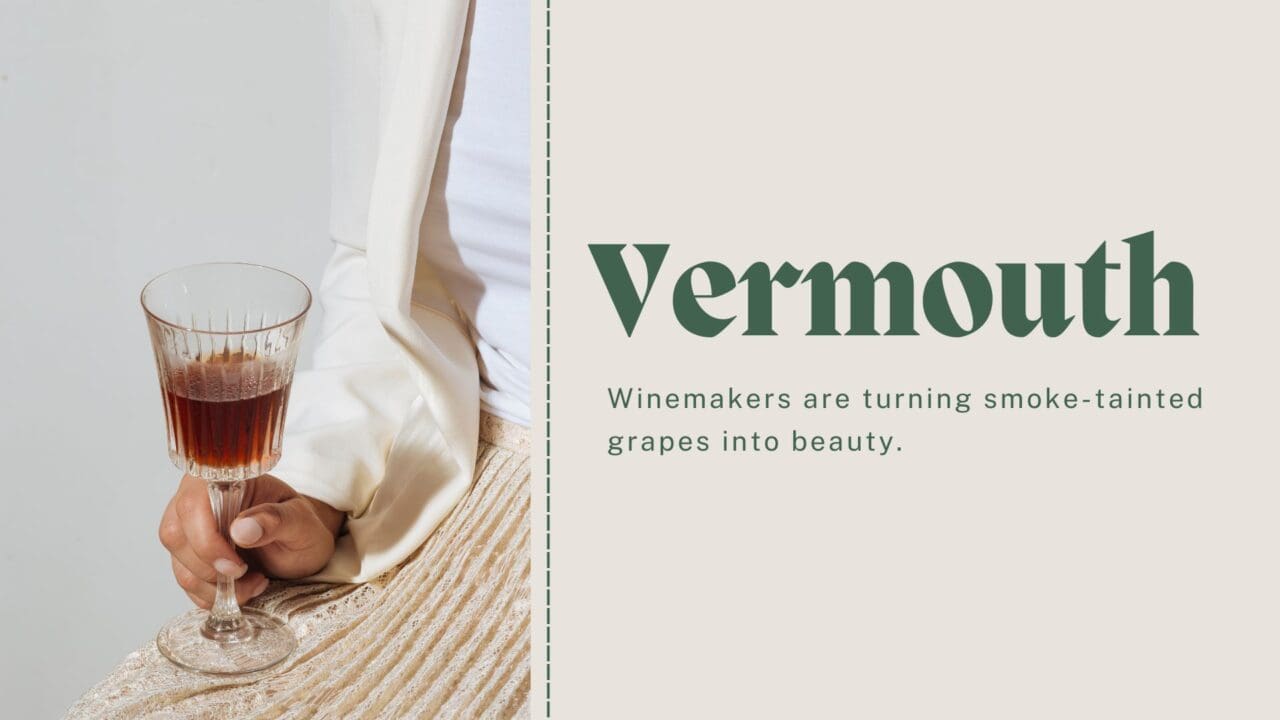Öömrang winery and distillery delivers a bit of German heritage and history — and a lot of flavor — in every bottle of fruit brandy and wine
Perched a few miles outside of Stanwood, Wash., on top of a hill with far-reaching postcard-worthy views of the Cascades one way, the Olympics another and pretty Skagit Bay unfurling before it, the location for Öömrang winery and distillery boasts natural Washington state inspiration in every direction. But the driving force behind the bottles of wine, eau de vie brandy and lesser-known geist brandy crafted on this 85-acre farm comes from farther afield, all the way across the Atlantic from Germany.
Öömrang owners Edmund and Christine Stoecklein moved to Washington in 2016 from New York, but both have strong German ties — her parents were born there, and he was too, before locating to the U.S. at age seven. Plus, his family has a 150-year-old winery in the Franconia region of northern Bavaria. You’ll find that German connection reflected everywhere at Öömrang, starting in a tangible, physical way. There’s a small wooden chapel they built, which you wouldn’t be surprised to see hiking the Waldstein mountains. The chapel is dedicated to Edmund’s grandfather (they share a name, too), as well as St. Edmund, who is depicted on the floor-length mosaic inside. Near it, imported bells ring on the same schedule as the diocese of Munich. The farm equipment is made by Clemens, established in Germany in 1952, while the snazzy, shiny Holstein still comes from Markdorf. And inside the immaculately sparkling winery/distillery itself, a wooden wagon handmade by Edmund Stoecklein’s grandfather in 1934 is suspended from the ceiling.

This German influence flows directly into their wine, made using unique German grape varietals, including ones rare in the Pacific Northwest like Siegerrebe and Muller-Thurgau and the almost-unfindable Kerner and Sylvaner. If you are looking for a bottle to enjoy, currently Öömrang features a range of sunshine-y approachable whites, with reds on the way.
Öömrang’s liquid lineage is perhaps even more evident in its fruit brandy collection, mirroring traditional Franconia farming estates with both eau de vie and geist. Having a vineyard that makes unaged fruit brandy — like grape-based grappa or marc — is nearer the norm than the exception in Europe, where enjoying a glass of these after dinner with family and friends is a regular way to celebrate memorable occasions and the joys of everyday life.

Here in the U.S., German-style eau de vie aren’t in excess on bar shelves home or out, though they are making inroads. Geist is nearly unheard of. Both are close cousins as fruit-based distilled clear spirits; a small difference in the crafting separates them. Makers start with a whole lot of fruit. At Öömrang, it’s 40 pounds of the specific type — with each pear, peach, berry or cherry painstakingly hand-selected — to distill a single liter. In general, for eau de vie, the fruit is fermented, distilled and bottled quickly. For geists (which translates to a “spirit/mind” combo, from the German, if getting philosophical), first the fruit is macerated in alcohol for a fair amount of time (Öömrang uses an alcohol made from grapes and macerates for one month), then distilled and bottled.
The end result in look? Identical. Both are clear spirits residing in lissome bottles with glass corks developed, as you might guess, in Germany. The taste, though, is different. Öömrang eau de vie and geists share the same 40% ABV (mirroring the average gin) and share the same goal of authentically representing the particular fruit. Eau de vie, however, is in taste a slightly sharper fruit essence above a stronger spirited nudge, where geists unveil fruit notes that are a tad softer on the tongue, alongside an approachable orchard and spring meadow flavor. Currently, Öömrang has two geists, raspberry and blueberry, and five eau de vie: Bartlett pear, raspberry, apricot, cherry and donut peach. A few more are planned. For each variety, think specific fruit inflections throughout the drinking process, nose to finish. Every bottle is designed to highlight the fruit.

Unadulterated Fruitness
In Europe, you’ll find these brandies happily consumed year-round, but I find eau de vie and geists ideal sipped solo on a late spring or summer’s day; if the mercury’s rising, serving them chilled isn’t a bad idea, nor is adding a single piece of ice. While they are strong spirits, the unadulterated fruitiness seems to sing within the “sun’s out” seasons. Sip slowly, letting the fruit flavors breathe and feel a part of the world’s growing and blooming process. Both brandies can be consummate players in mixed drinks as well, from eau de vie highballs with soda, to geist and tonic, to more complex cocktails. A simple way to test this theory is by subbing one for a gin in the recipe of a favorite mix — it won’t always work, but you may end up unveiling a notable original combination with the brandy and ingredients working together wonderfully.

Make things that Taste Good
Öömrang is a combination like that, in a way. Edmund Stoecklein (with an architecture background) takes the lead on farm design. He’s built a full skeet and trap shooting range aiming through a berm and over a fish pond, finishing up a bottling building and a wine and brandy warehouse, and constructing a greenhouse to grow wasabi. Christine Stoecklein is in charge of winemaking and distilling, and she’s hoping to entice stateside drinkers to their fruit brandy beauties with a simple goal: “make things that taste good.”
Sounds easy, right? At Öömrang, it’s an in-depth endeavor, from processing water used on-site to above-EPA standards, to painstakingly sampling every single batch herself during distilling to know the exact moment to pull the hearts (the yummier, most drinkable and desirable part of the distilled product), to distilling “low and slow,” using lower temperature over a longer time to ensure maximum fruit goodness transfers to finished product.
After loads of work clearing land overgrown with thick Pacific Northwest underbrush and trees and planting vineyards, the couple launched their first wines in 2019, followed by brandies in 2021. So far, her “taste good” focus is working; Öömrang products have garnered multiple awards and high ratings from places as far-ranging as the International Wine and Spirits Competition to several Washington-based awards. One highlight was Öömrang’s Bartlett pear brandy scoring a 100-point Century Award at the 2020 double-blind PR%F competition after a unanimous perfect score by the full judging panel, and subsequently receiving the title of “Brandy of the Year” at the John Barleycorn Awards.
If fruit brandy shy, the Bartlett pear is where I’d suggest starting an eau de vie adventure. The just-plucked pear aroma blooms from the glass and when it hits your tastebuds, you’ll be dreaming of the best pear you ate as a child, with pristine pear loveliness in each sip. Bring on the new brandy converts! Though they’re working on expanding distribution, Öömrang’s wines and brandies are best obtained via their website. Or, if you happen to be in Stanwood, stop by Patini’s restaurant, where bartender Bethany Gover has put together a list of cocktails using their fruit brandies, highlighted by an Öömrang Bartlett pear eau de vie sidecar. While Öömrang’s German heritage might not get brought up with each glass polished off, that lineage beautifully connects today’s drinkers with far-away and long-past sippers — a notion almost as nice as the brandy itself.






